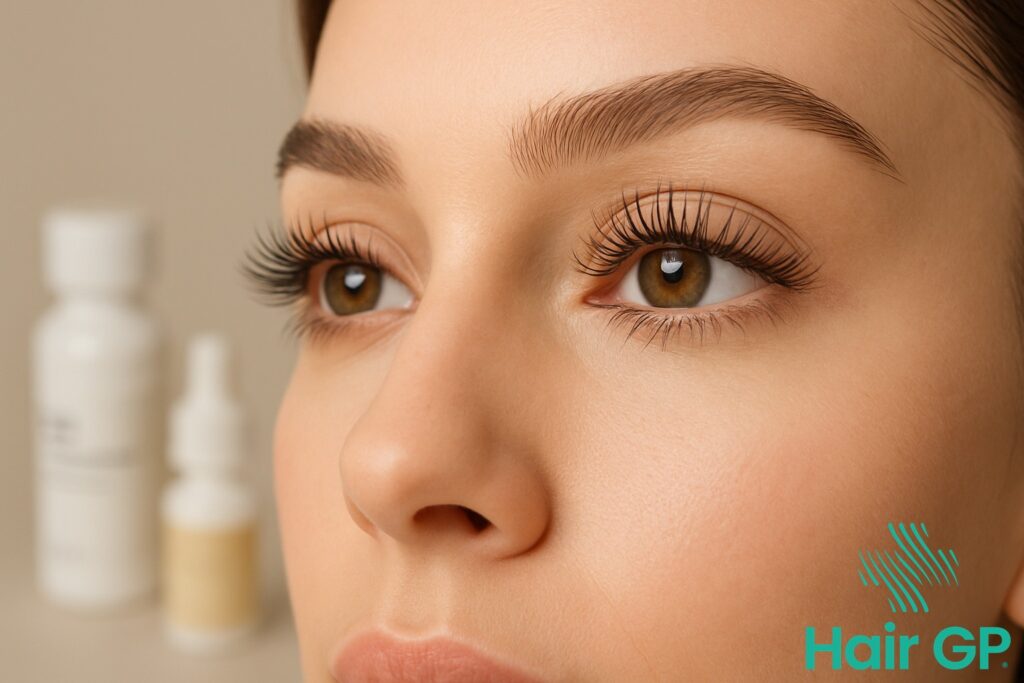Introduction
The quest for fuller lashes has sparked a booming market of eyelash serums, leaving many wondering which option delivers the best results for their investment. From medical-grade treatments requiring a doctor’s prescription to cosmetic formulations available at your local beauty counter, the choices can feel overwhelming. Understanding the fundamental differences between prescription vs over-the-counter lash serums is crucial for making an informed decision that aligns with your goals, budget, and safety concerns.
This comprehensive guide explores everything you need to know about both categories of eyelash growth serum products. We’ll examine the science behind how these formulations promote lash growth, compare their active ingredients and mechanisms of action, and evaluate their effectiveness based on clinical evidence. You’ll discover realistic timelines for results, potential side effects to consider, and a detailed cost analysis to determine true value. Whether you’re seeking dramatic transformation or subtle enhancement, we’ll help you identify which of the best eyelash serums suits your unique needs, ensuring you invest wisely in your journey towards the lashes you desire.
Key Takeaways – TL/DR
- Prescription lash serums like Latisse contain prostaglandin analogs and provide clinically proven results but require doctor supervision
- OTC lash serums use peptides, vitamins, and moisturizers for gentler enhancement without prescription-strength ingredients
- Results from prescription serums appear in 8-16 weeks versus 6-12 weeks for OTC options, with prescription showing more dramatic changes
- Choose prescription for significant lash loss or sparse lashes, OTC for enhancement and conditioning of existing lashes
Understanding Prescription Lash Serums
Prescription lash serums represent the medical-grade approach to enhancing eyelash growth, backed by rigorous clinical testing and regulatory approval. These pharmaceutical formulations, originally discovered through glaucoma treatment, require consultation with eye doctors due to their potent active ingredients and potential side effects that necessitate professional monitoring.
How Prescription Formulas Work
Prescription serums utilise prostaglandin analogues, synthetic compounds that mimic naturally occurring prostaglandins in the body. These molecules extend the anagen phase of the lash growth cycle, allowing follicles to produce longer, thicker lashes over time [1]. The mechanism involves stimulating hair follicle receptors and increasing the percentage of hairs in the active growth phase whilst simultaneously decreasing those in the dormant telogen phase. This pharmaceutical approach underwent extensive FDA evaluation, with clinical trials demonstrating significant improvements in lash length, thickness, and darkness compared to placebo [2]. The prescription requirement ensures proper patient screening and monitoring for potential ocular side effects.
Available Prescription Options
Latisse (bimatoprost ophthalmic solution 0.03%) remains the only FDA-approved prescription treatment specifically for inadequate eyelashes, receiving authorisation in 2008 [3]. Several glaucoma eye drops containing similar prostaglandin analogues, including travoprost and latanoprost, are sometimes prescribed off-label for lash enhancement, though they lack specific approval for cosmetic use. Obtaining these prescription formulas requires consultation with qualified healthcare providers who can assess suitability, explain proper application techniques, and monitor for adverse reactions. Eye doctors typically evaluate patients’ ocular health history, current medications, and potential contraindications before prescribing these treatments, ensuring safe and appropriate use of these potent pharmaceutical agents.
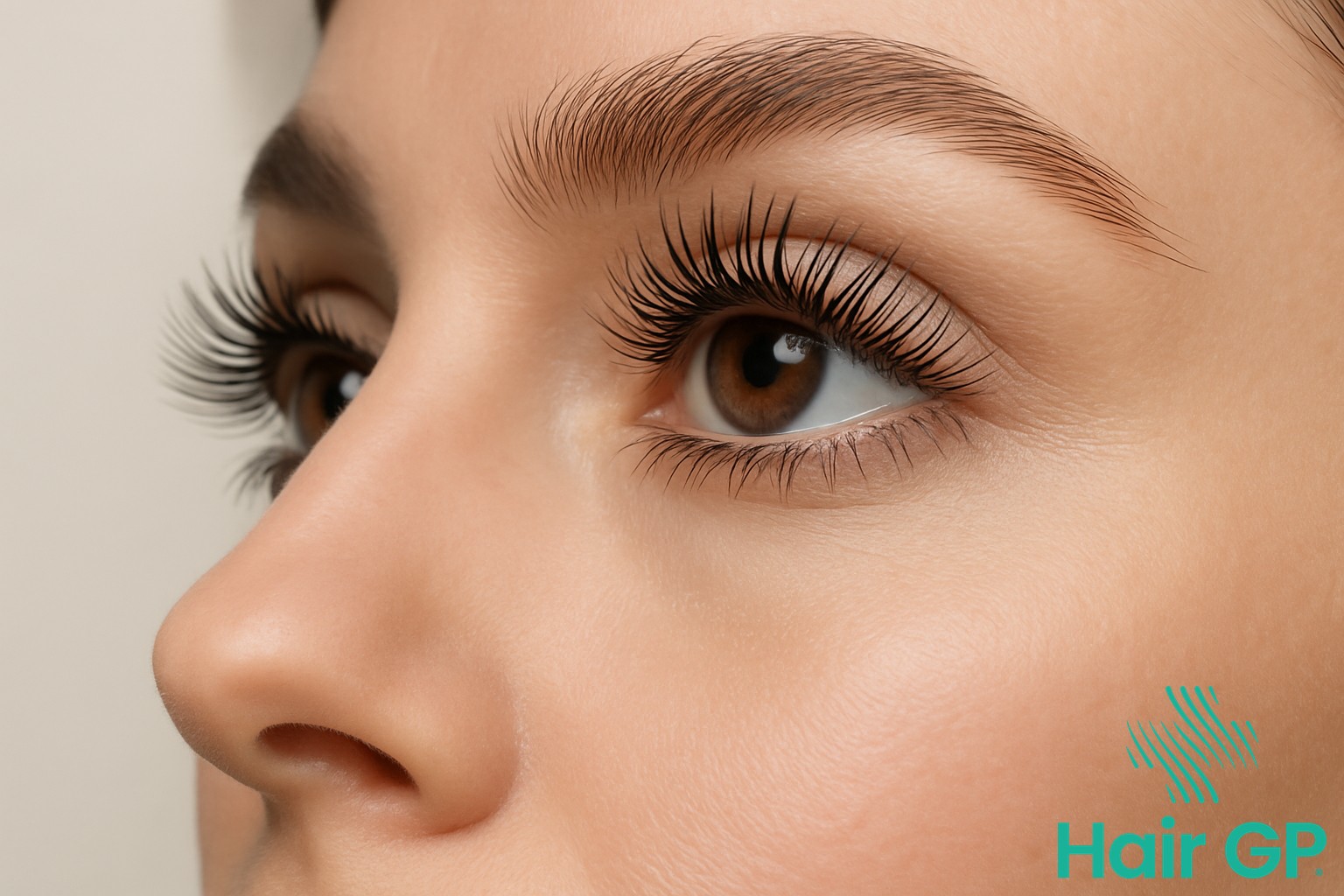
Over-the-Counter Lash Serums Explained
Over-the-counter lash serums offer an accessible alternative to prescription treatments, relying on cosmetic ingredients rather than pharmaceutical compounds to enhance lash appearance. These OTC serums work by conditioning and strengthening existing lashes through nutrient-rich formulations, making them appear healthier and fuller without the potent growth factors found in prescription options.
Common OTC Ingredients
Most over the counter formulations centre around peptide complexes that support lash health and resilience. These peptide based serums typically contain amino acid chains that help fortify lash structure, including biotin peptides and myristoyl pentapeptide-17. Vitamins and antioxidants form another crucial component, with vitamin E, panthenol, and green tea extract frequently appearing to protect lashes from environmental damage. Conditioning agents like hyaluronic acid, glycerin, and plant-based oils provide essential moisture, preventing brittleness and breakage that can limit lash length potential.
Popular OTC Brands and Formulations
The market offers diverse approaches to lash enhancement, with peptide serums leading the category. The Ordinary Multi Peptide Lash and Brow Serum exemplifies this approach, combining multiple peptide complexes at an affordable price point. Natural ingredient options appeal to those seeking gentler formulations, featuring castor oil, biotin, and botanical extracts. Hybrid formulas bridge the gap between simple conditioners and advanced peptide technology, often incorporating both nourishing oils and scientifically-backed peptides. These OTC lash serums provide visible improvements in lash condition and appearance, though results typically appear more gradually than prescription alternatives.
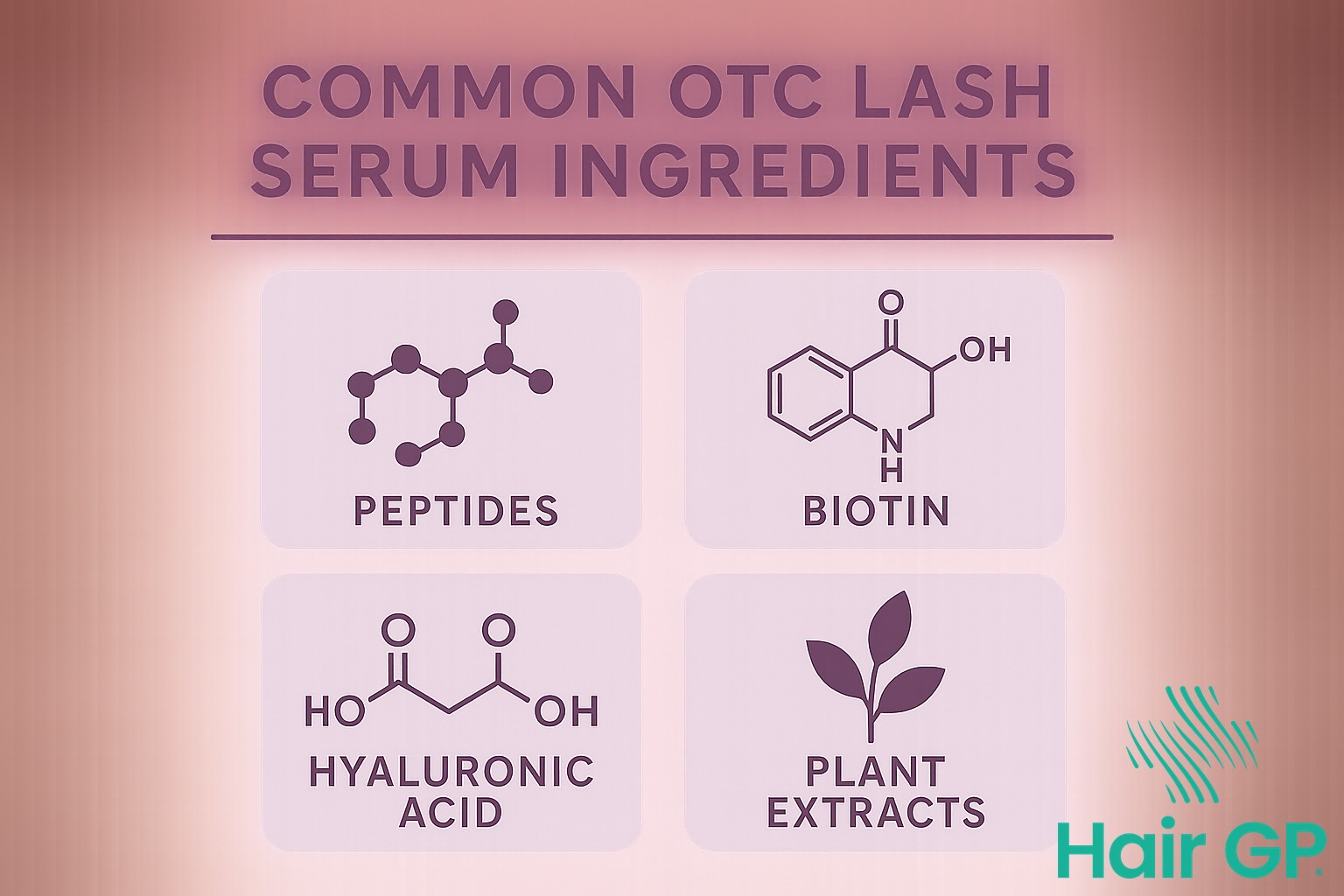
Key Ingredients: Prescription vs OTC
Understanding the fundamental differences between prescription and over-the-counter eyelash growth serums begins with their active ingredients. Prescription formulas contain prostaglandin analogs originally developed for glaucoma treatment, whilst OTC cosmetics rely on peptides, vitamins, and botanical extracts to enhance lash appearance without pharmaceutical-grade compounds.
Prescription Active Ingredients
Bimatoprost, the primary prostaglandin analog in prescription serums, works by extending the anagen (growth) phase of the lash cycle. Clinical studies demonstrate that 0.03% bimatoprost solution increases lash length by 25% and thickness by 106% after 16 weeks of treatment[4]. This FDA-regulated compound mimics naturally occurring prostaglandins, binding to receptors in hair follicles to stimulate growth. Originally formulated for glaucoma patients, bimatoprost’s lash-enhancing effects were discovered as a beneficial side effect, leading to its approval for cosmetic use in 2008.
OTC Active Ingredients
Over-the-counter serums utilise gentler ingredients like myristoyl pentapeptide-17, which studies suggest can increase lash density by stimulating keratin production[5]. These formulas often include hyaluronic acid for moisture retention, biotin for structural support, and amino acids to strengthen lash proteins. Botanical extracts such as red clover and green tea provide antioxidant protection whilst conditioning existing lashes. Though less potent than prescription alternatives, these ingredients work synergistically to improve lash appearance without the regulatory oversight or potential side effects associated with prostaglandin analogs.
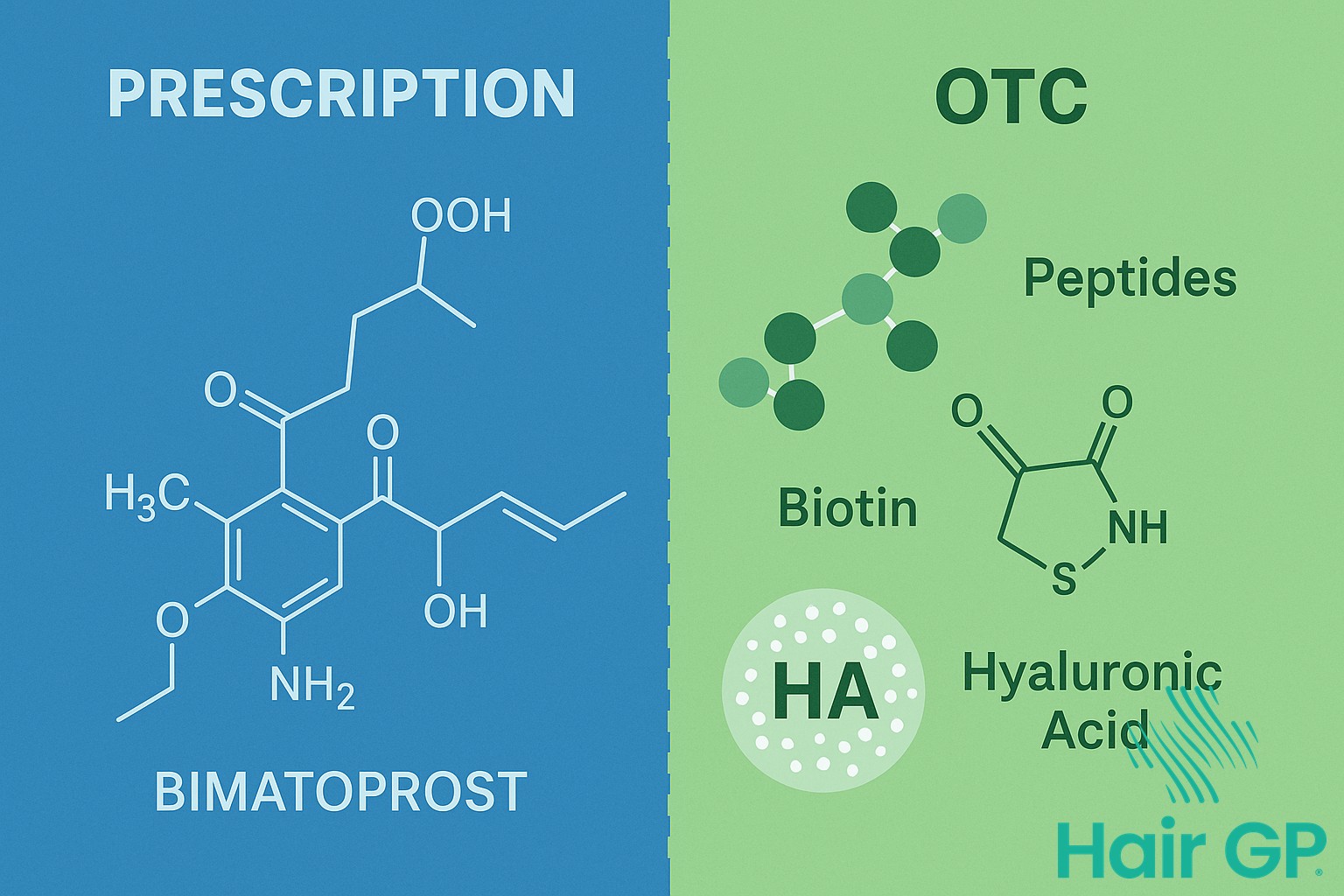
Effectiveness and Results Timeline
Understanding how eyelash serums work and their timelines helps set realistic expectations for achieving voluminous lashes. Evidence-based comparisons reveal significant differences between prescription and over-the-counter formulations in both speed and magnitude of results, with prescription options typically delivering more dramatic outcomes whilst OTC serums focus primarily on conditioning benefits.
Prescription Serum Results
Clinical trials demonstrate that prescription lash growth serums produce noticeable changes within four weeks of daily application [6]. Initial improvements include increased darkness and thickness of existing lashes. Full results typically manifest at sixteen weeks, with users experiencing up to 25% increase in lash length, 106% increase in fullness, and 18% improvement in darkness [6]. Maintenance requires continued nightly application, as lashes gradually return to baseline within several weeks to months after discontinuation. Results vary amongst individuals, but most users achieve significantly longer, thicker natural lashes with consistent use.
OTC Serum Results
Over-the-counter serums require patience, with visible improvements typically emerging between six to twelve weeks of regular use. Unlike prescription formulas that actively stimulate growth, OTC serums primarily condition and strengthen existing lashes, reducing breakage and promoting healthier appearance. Users may notice lashes appear shinier and feel softer within two to three weeks, whilst modest length improvements develop gradually. Individual variation proves substantial with OTC products, as results depend on baseline lash health, application consistency, and formula quality. Realistic expectations include 10-15% improvement in overall lash appearance rather than dramatic transformation to thicken eyelashes significantly.
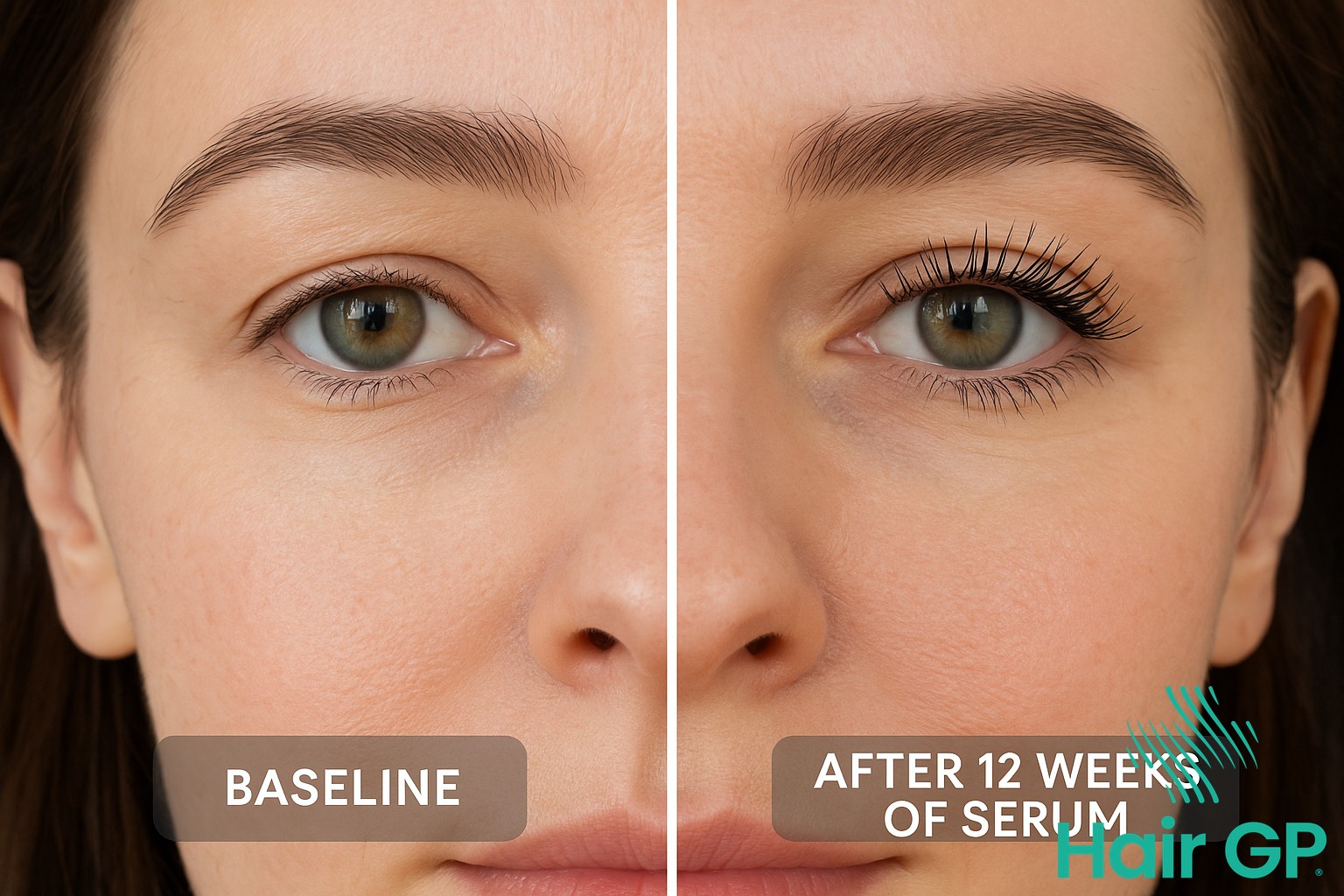
Safety Profiles and Side Effects
Understanding safety profiles remains crucial when choosing between prescription and over-the-counter lash enhancement options. Both prescription prostaglandin analogues and peptide-based serums carry distinct risk profiles that warrant careful consideration. Clinical trials reveal that prostaglandin analogues trigger ocular side effects in approximately 15-45% of users, with the most concerning being iris pigmentation changes [7]. These prescription formulations commonly cause eyelid darkening, conjunctival hyperaemia, and periocular fat atrophy, creating a sunken appearance around treated eyes.
Meibomian glands dysfunction represents another significant concern, particularly with prescription options, potentially leading to chronic dry eye syndrome. Studies indicate that 30% of bimatoprost users experience ocular surface irritation [8]. Additionally, these medications increase susceptibility to styes and bacterial infections along the lash line. An ophthalmologist consultation becomes essential before initiating treatment, especially for individuals with pre-existing ocular conditions.
Over-the-counter peptide serums demonstrate markedly improved tolerability profiles, though allergic reactions and mild irritation remain possible. Contraindications for prescription formulations include active ocular inflammation, uveitis, and pregnancy, whilst peptide serums primarily require avoiding known allergen sensitivities. Regular monitoring ensures early detection of adverse effects, particularly the irreversible pigmentation changes associated with prostaglandins.
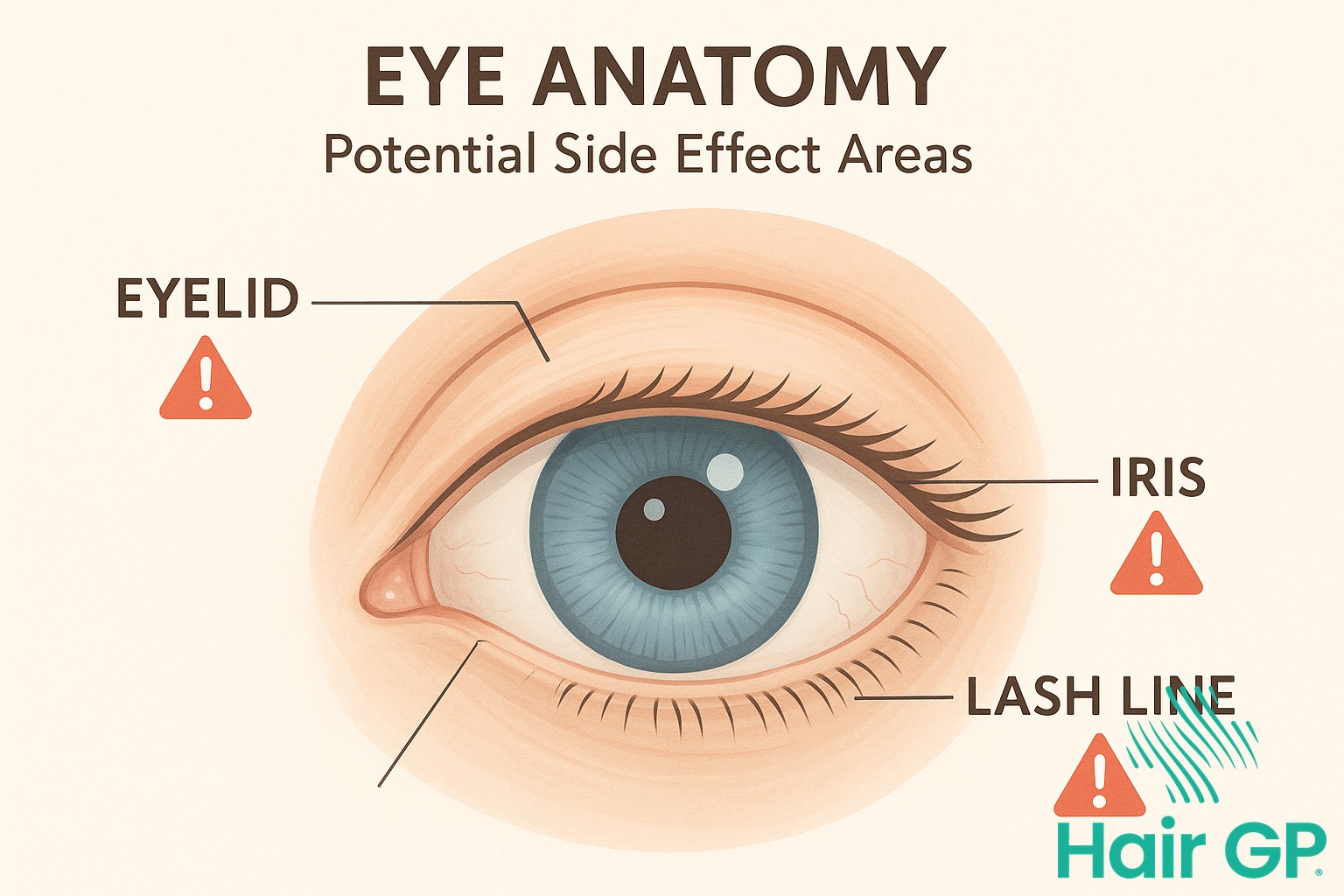
Cost Analysis: Investment vs Results
When considering eyelash serums, understanding the financial commitment helps determine the most suitable option for your budget. Prescription serums like Latisse typically cost £100-150 monthly, requiring an initial consultation fee of £30-50. With daily application necessary for optimal results, annual expenses can exceed £1,200, though many users report visible improvements within 8-12 weeks.
Over the counter options present a more accessible entry point, ranging from £30-80 per tube lasting 2-3 months. The best eyelash serums in this category deliver gradual results without prescription requirements, making them cost-effective for long-term use. When calculating cost-per-result, OTC serums often provide better value for those seeking moderate enhancement.
Comparatively, lash extensions demand £50-120 monthly for maintenance fills, whilst quality mascara costs £15-30 but requires daily application and makeup removal. Serums eliminate these recurring expenses whilst nurturing natural lashes. For budget-conscious consumers, starting with reputable OTC formulas allows testing effectiveness before committing to prescription alternatives, ensuring your investment aligns with desired outcomes.
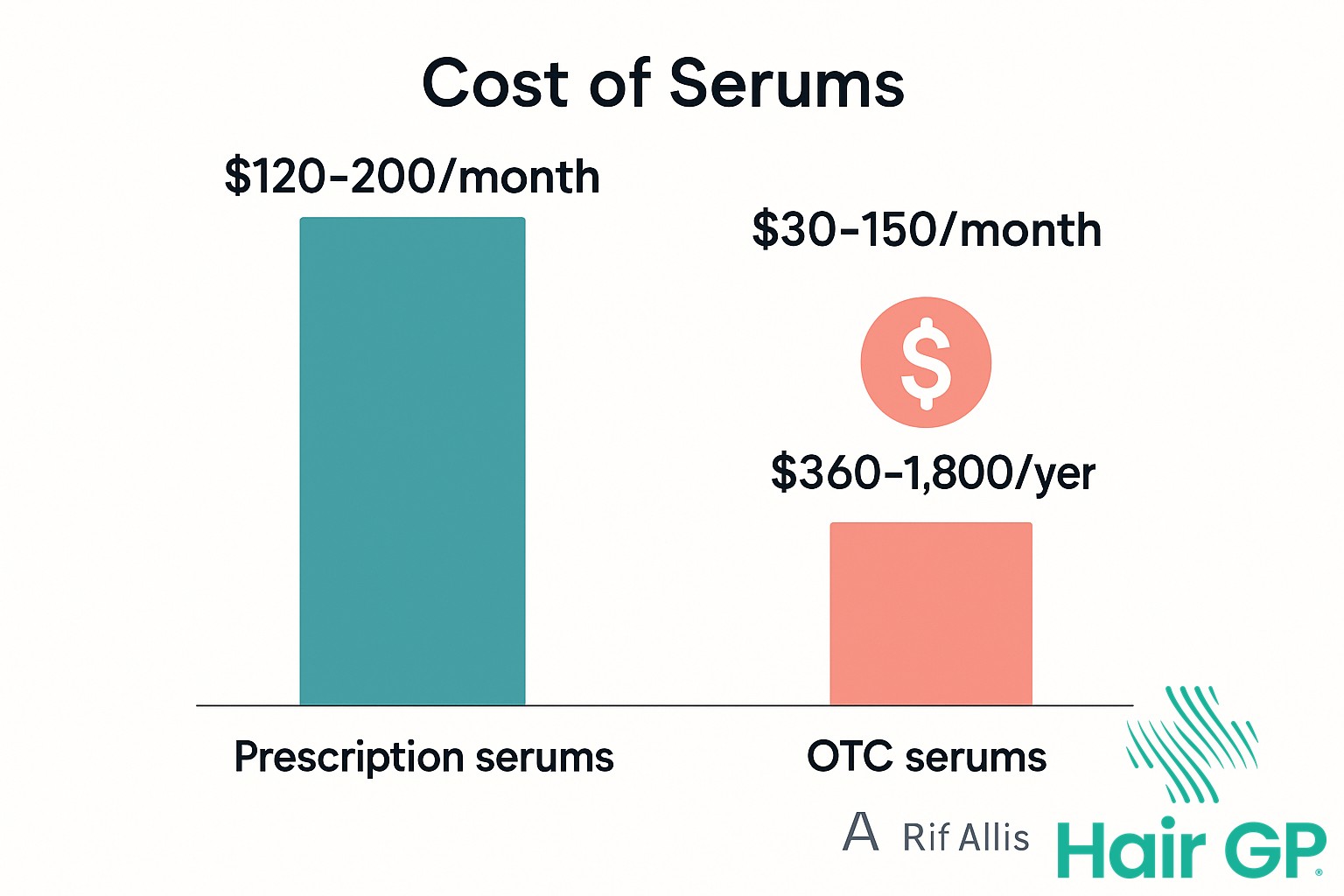
Who Should Choose Which Option?
Prescription lash growth serums suit those seeking dramatic transformation of their eyelashes, particularly individuals with naturally sparse or thin lashes who desire significant length and volume improvements. These medical-grade treatments prove ideal for people without contraindicating eye conditions, willing to commit to daily application along the upper lash line, and prepared for the higher cost investment. Regular monitoring by an eye care professional ensures safe usage whilst maximising results for individual lashes.
OTC lash serums better serve those prioritising conditioning and modest enhancement without prescription requirements. These formulas work excellently for maintaining healthy lashes, preventing breakage, and supporting natural growth cycles. Budget-conscious consumers, those with sensitive eyes, or individuals seeking temporary improvements for special occasions find OTC options more suitable. Additionally, people already blessed with decent lash length who simply want improved thickness and shine benefit from these gentler alternatives.
Consider your medical history, particularly any eye conditions or medications, before choosing either option. Those incorporating lash serums into broader hair care routines often start with OTC versions to assess tolerance before potentially advancing to prescription formulas.
Conclusion
When considering prescription vs over-the-counter lash serums, the choice ultimately depends on individual goals and circumstances. Prescription options like bimatoprost remain the most clinically proven eyelash growth serum for dramatic results, particularly beneficial for those with sparse lashes due to medical conditions. However, their higher cost and potential side effects warrant careful consideration.
For many users, the best eyelash serums may actually be quality OTC formulations containing peptides and botanical extracts. These gentler lash serums offer gradual improvements without prescription-related risks, making them ideal for maintaining healthy lashes or achieving subtle enhancement. Those seeking temporary solutions might find eyelash extensions more suitable than either serum type.
Before investing in any treatment, consulting eye doctors ensures safety, particularly for contact lens wearers or those with existing eye conditions. Setting realistic expectations proves crucial—prescription serums deliver noticeable results within 8-16 weeks, whilst OTC options require patience and consistent application for modest improvements.
Frequently Asked Questions
It’s not recommended to combine prescription and OTC lash serums without consulting your eye doctor. Using multiple serums can increase the risk of irritation and side effects. If you’re using a prescription serum, stick to that treatment plan unless advised otherwise by your ophthalmologist.
Yes, many lash serums can be used on eyebrows to promote fuller growth. Prescription serums like Latisse are sometimes used off-label for brow enhancement, while many OTC serums are specifically formulated for both lashes and brows. Always check the product instructions and consult with eye doctors if using prescription formulas.
Results from both prescription and OTC lash serums are not permanent. After discontinuing use, lashes typically return to their original state within 3-6 months as they complete their natural growth cycle. Prescription serum results may fade slightly faster than OTC conditioning effects.
OTC peptide-based serums are generally safe with lash extensions and may help strengthen natural lashes. However, prescription serums and oil-based formulas can weaken extension adhesive. Always inform your lash technician about serum use and follow their recommendations.
Prescription serums containing prostaglandin analogs have a rare but documented risk of darkening the iris, particularly in hazel or light-colored eyes. This side effect is permanent and more likely with direct eye contact. OTC peptide serums do not carry this risk as they don’t contain prostaglandins.
References
- Law SK. Bimatoprost in the treatment of eyelash hypotrichosis. Clin Ophthalmol. 2010;4:349-358.
- Cohen JL. Enhancing the growth of natural eyelashes: the mechanism of bimatoprost-induced eyelash growth. Dermatol Surg. 2010;36(9):1361-1371.
- Woodward DF, Liang Y, Krauss AH. Prostamides (prostaglandin-ethanolamides) and their pharmacology. Br J Pharmacol. 2008;153(3):410-419.
- Woodward DF, Liang Y, Krauss AH. Prostamides (prostaglandin-ethanolamides) and their pharmacology. Br J Pharmacol. 2008;153(3):410-419.
- Lim KS, Mohamed NV, Chow SC, et al. Formulation development and stability studies of lash serum containing bioactive peptides. Int J Cosmet Sci. 2018;40(3):295-304.
- Wester ST, Lee WW, Shi W. Eyelash growth from application of bimatoprost in gel suspension to the base of the eyelashes. Ophthalmology. 2010;117(5):1024-31.
- Choi HY, Lee JE, Lee JW, et al. In vitro study of antiadipogenic profile of latanoprost, travoprost, bimatoprost, and tafluprost in human orbital preadiopocytes. J Ocul Pharmacol Ther. 2018;34(6):452-458.
- Arita R, Itoh K, Maeda S, et al. Effects of long-term topical anti-glaucoma medications on meibomian glands. Graefes Arch Clin Exp Ophthalmol. 2019;257(7):1341-1349.

